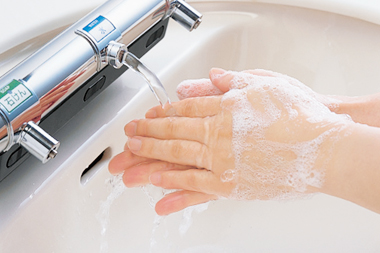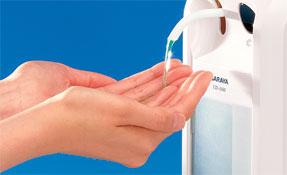
The two leading sets of guidelines on hand hygiene in healthcare settings are published by the World Health Organization (WHO) and the Centers for Disease Control and Prevention (CDC). These guidelines have been prepared to improve patient health and safety through correct, evidence-based hand hygiene. Each guideline is a compendium of critical knowledge, data and know-how on hand hygiene in the medical field.
Within each set of guidelines are recommendations on hand hygiene technique, indications, products, and management to effectively and systematically reduce the spread of infection. Every facet of hand hygiene is discussed to ensure preventative hygiene measures can be conducted in any facility with calculable results. The recommendations in both guidelines are unified, and can be viewed in full on each organization's website.1), 2) Below are some paraphrased examples.

The CDC Guideline for Hand Hygiene in Health-Care Settings states that washing with normal soap and running water can reduce bacteria on the skin 0.6~1.1 log10 in 15 seconds and 1.8~2.8 log10 in 30 seconds.3) In addition, alcohol hand disinfectant can further reduce bacteria an average of 3.5 log10 in 30 seconds and 4.0~5.0 log10 in 1 minute.

Hand hygiene can be conducted at varying degrees of antisepsis depending on the possibility of causing infection. Each level below is increasingly effective at cleaning and removing transient and resident flora. Beginning with handwashing for the general public and moving to hand hygiene for surgeons and intensive care medical staff, hand hygiene can be optimized for most healthcare situations.

Hand hygiene is commonly regarded as the best way to keep hands from accumulating infectious microorganisms. However, most of these microorganisms found in healthcare settings are not usually harmful to healthcare staff.

The simple act of hand-washing does not guarantee all areas of the hands will be equally cleaned. Areas such as the thumbs, fingertips, and between the fingers are frequently missed. This can leave the hands contaminated and possibly weaken the effect of hand disinfectants.